This give a nice picture of what was happening in Rome in February 1879. It is nine and a half years after the capture of Rome and the culmination of the Risorgimento. February 7th 1879 was the first anniversary of the death of Pope Pius IX, and thirteen months since the death of Vittorio Emanuele II on January 9th 1878. The Rev. Dr. Henry O’Bryen had been in Rome for about six years, and appears to be curiously absent from things. But the following cutting explains his absence: “REV. DR. O’BRYEN.—The Rev. Dr. Henry O’Bryen has left Rome for Nice for change of air after his recent serious indisposition. The Tablet Page 17, 15th March 1879″
Anyway back to Rome, on February 8th, 1879.
THE VATICAN.
The Feast of the Purification of Our Lady,
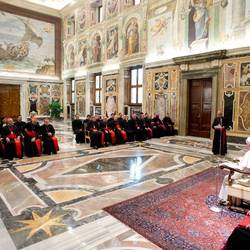
On Sunday the 2nd, LEO XIII., received the customary offerings of wax candles front the basilicas and the various religious orders. The ceremony was attended by many prelates and parochial clergymen, Knights of Malta, Chamberlains, &c., &c. In the evening his Holiness received in private audience Monsignor Ramadie, Archbishop of Albi in France, who presented a large offering of Peter’s Pence. On Monday, February 3rd, the Consistorial Hall was filled with an immense number of ladies and gentlemen. The Holy Father made his appearance in the Hall shortly after 11 o’clock, attended by Monsignor Macchi, Maestro di Camera, and by Monsignor Boccali and Monsignor Ciccolini, the Chamberlains Partecipanti in Waiting.
Among the foreign ladies received were the Countess Elizabeth de Perchestine, the Countesses Marie Louise de Biesme, Maria Collino Mariani, and Emilia Desberger. Monsignor Kirby presented the Holy Father with the sum of £200 sterling, an offering from Patrick Power, Esq., of Halifax, U.S.
Lord George Paget, who was introduced by Monsignor Stonor, had audience of his Holiness. On the 5th of February private audience was given to the Rev. Luigi Della Valle, Director of the Pontifical Press of the Immaculate Conception at Modena, and to the Rev. Gaspare Olmi, Missionary Apostolic, who presented to the Pope several religious periodicals printed by their establishment, and also an offering of Peter’s Pence from the Direito Cattolico of Modena.
PRINCE PAUL BORGHESE AND THE QUIRINAL.
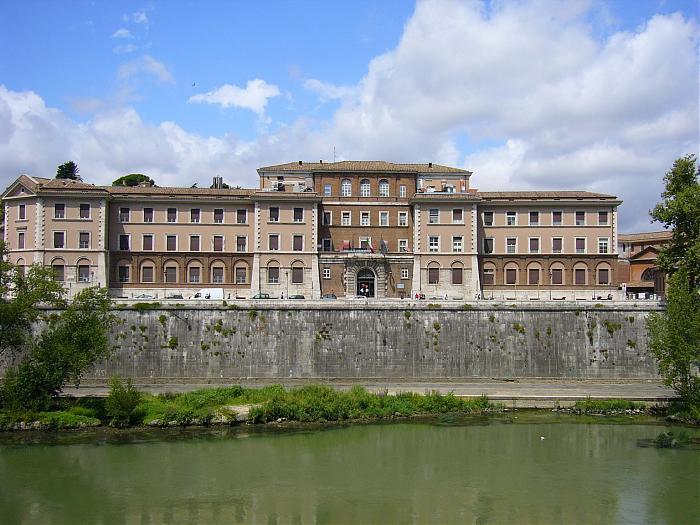
The Queen visited last week the San Spirito Hospital, of which Prince Paul Borghese, Prince of Sulmona, is Deputato Administratore, or acting manager. In this capacity the Prince accompanied Queen Margarita in her visit to the several wards. Her Majesty always addressed him as “Signor Deputato,” and never as Prince Paul Borghese. She gave a donation to the hospital funds, and the Prince sent a servant of the hospital to the Quirinal to write in the visitor’s book an entry, stating that the Deputato Administratore of the Hospital thanked her Majesty the Queen for the honour conferred on the hospital by her visit. The Prince himself has never been to the Quirinal since 1870.
REQUIEM FOR PIUS IX
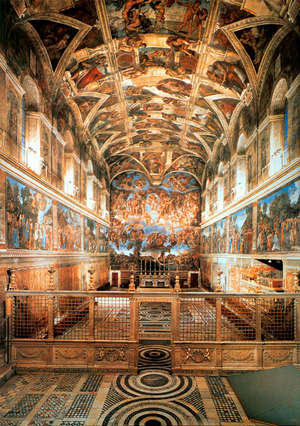
A Requiem Mass for the repose of the soul of Pius IX. was sung in the Sistine Chapel on the 7th. No tickets of admission were given but invitations to attend were sent to the Ambassadors and Ministers accredited to the Holy See, and to the Roman nobility, and to a few distinguished strangers. The royal tribune was unoccupied. The diplomatic benches and the seats reserved for the wives and daughters of Ambassadors and for the Roman ladies were filled. The members of the Pope’s household were all present, as well as numbers of Archbishops, Bishops and prelates and heads of Religious Orders. Six Camerieri Segreti di Spada e Cappa were on duty, dressed in their court costume. Many other camerieri were present and wore their chains of office and decorations. Among these were Commendatore Winchester, Count de Raymond, Mr. Hartwell Grissell, Mr. Ogilvy Fairlie, Mr. John Grainger, &c., &c.
All the Cardinals resident in Rome attended,except one or two, such as Guidi and Simeoni, who were indisposed. The Dean of the Sacred College sang the Mass. The Pope assisted and gave the absolutions. The catafalque was very small and was covered by a plain pall of gold cloth without any chandeliers or standards for tapers around it. Leo XIII. entered the chapel about 11 a.m. and took his seat on the throne, having on his right hand a Cardinal Deacon and Prince Orsini, Prince Assistant, and on the other hand a Cardinal deacon and the Prefect of Pontifical Masters of Ceremonies. The Mass was by Palestrina. The Dies Ire was by Mustafa. [Domenico Mustafà, the Direttore Perpetuo of the Sistine Choir was a soprano castrato].
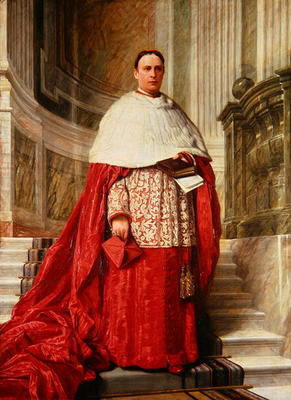
The absolutions were by Casciolini. Among the English and Irish ecclesiastics present were Cardinal Howard, the Hon. Dr. Clifford, Bishop of Clifton, and Bishop assistant at the throne ; Bishop O’Mahony, the Hon. and Right Rev. Mgr. Stonor, the Right Rev. Tobias Kirby, Rector of the Irish College ; and Monsignor de Stacpoole. Among the favoured occupants of the seats reserved for strangers were Lady Eyre and Mr. and Mrs. Scully. The Pope seemed in excellent health, and his clear, ringing voice was heard with distinctness in every part of the Sistine.
THE MASS AT ST PETER’S.
On Saturday, the 8th, the Requiem was sung for Pius IX. in the great Basilica of St. Peter’s. The police and soldiers in the Piazza were numerous, and order was well preserved. From 9 a.m. a constant stream of carriages poured over the bridge of St. Angelo, and by half-past ten a.m. the vast Basilica was three parts full. The crowd of worshippers kept surging and shifting, and I fancy some fifty thousand persons must have at one time been within the sacred edifice. A beautiful catafalque was erected between the confessional and the altar of the chair. The catafalque was simple and at the same time majestic, and consisted of an oblong structure built in four stages, gradually diminishing in pyramidal form. At the summit was a large triple crown in silver and gold. At each angle were five bronze candelabra in the form of fruit bearing palms, and containing a vast quantity of lights. On each stage of the catafalque were numbers of candles artistically arranged. The hangings were of black and cloth of gold.

This catafalque presented a strong contrast to that which was erected in Sta. Maria degli Angeli for Victor Emmanuel’s requiem, and which was perhaps the most pagan in idea ever erected for a Christian funeral. The style chosen for the late King’s catafalque was Doric, the superstructure being raised on four imitation-granite columns, and having at the angles severely classical tripod lamps burning green flames (a custom borrowed from France, and never introduced into Rome until 1878 by the Italians). On the first stage of this heathenish catafalque was a piece of sculpture in white marble representing the wolf dead, and Romulus and Remus weeping. A meagre cross at the summit was the only Christian symbol.
In comparing the two funerals there was also a marked difference in the behaviour of the visitors. The State funerals of the late King were attended by well dressed persons, who took their place as in a theatre, talked with their neighbours and neither knelt nor said their prayers. The vast majority of those who on Saturday went to St. Peter’s went to pray for the repose of the soul of Pius IX. Rude persons there were, chiefly Protestants, who forced their way hither and thither, stared about, and consulted their Murray or Baedeker. But in spite of these tourists and idlers the devotion of the great multitude was fervent, and many eyes were moist with tears as the strains of the Requiem aternam, the Dies ire, and the Libera echoed through the nave. Cardinal Borromeo, Archpriest of the Basilica, sang the Mass, and hundreds of Bishops sat on benches at either side of the choir. There were no palchi and but few seats reserved for great personages other than those accommodated in the four tribunes round the confessional. But many nobles and church dignitaries stood unnoticed among the crowd, and many gentle ladies endured the fatigue of some two hours’ duration, in order to pay respect to the memory of the saintly Pontiff.
ST. AGATHA’S DAY AT THE IRISH COLLEGE.
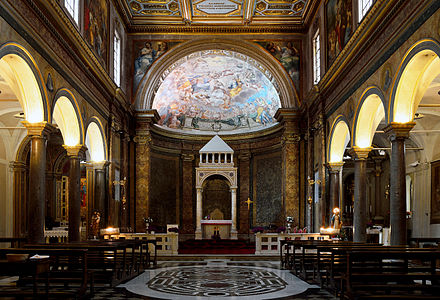
On Wednesday, the 5th of February, the Feast of St. Agatha, V. M., High Mass was celebrated in the Church of St. Agatha, the Church of the Irish College, with much solemnity. The Mass was sung by Monsignor de Stacpoole, in presence of his Eminence Cardinal. de Falloux, titular Cardinal of the Church. The Deacon and Sub-deacon were the Rev. Messrs. Hassan and McCarthy, and Mgr. Cataldi, Master of Pontifical Ceremonies, officiated as the Master of Ceremonies. The church was remarkably warm and was beautifully decorated. The esteemed Rector, Monsignor Kirby, Domestic Prelate to Leo XIII. ; Bishop O’Mahony, Mgr. Rinaldini, Archbishop Elect of Cyrene in fiartibus ; and the Very Rev. John Egan, the Vice-Rector, occupied seats in the choir. After Mass the Rector entertained at dinner his Eminence Cardinal Nina, Secretary of State ; his Eminence Cardinal de Falloux, the Hon. and Right Rev. Dr. Clifford, Bishop of Clifton ; Right Rev. Bishop O’Mahony, Monsignor Agnozzi, Secretary to the Propaganda ; Monsignor de Stacpoole, Monsignor Cataldi, Very Rev. Dr. O’Callaghan, Rector of the English College ; Monsignor Hostlot, Rector of the American College ; Very Rev. Dr. Campbell, Rector of Scots’ College ; Very Rev. Dean Quinn, the Prior of St. Clement’s, the Guardian of St. Isidore’s, the Prior of Sta. Maria in Posterula, Monsignor Rinaldini, the Marquis de Stacpoole, Mr. Scott, Mr. Mahony, the Vice-Rector of Propaganda, Dr. Ryan, Signor Fausti, Father Keogh, Rev. Dr. Stonor, Father Hayes, &c., &c.
THE DEBTS OF THE ROMAN MUNICIPALITY.
Before the invasion of Rome by the Italians on the 20th of September [1870,nine years before this was written], the city of Rome was prosperous and rich. The people fared well. Artisans artists, and traders, had good employment and made considerable gains. The poor were able to live and received help from the ample charity of the benevolent. Gold and silver coins were in daily currency. Numbers of wealthy foreigners resided in Rome and spent quantities of money. Taxes were light. The duties paid on articles of food were not oppressive. The rents of houses were low. There was no usury, nor any sign of famine, nor any extraordinary resort to the pawn office. Suicide was unknown. Rome was a fortunate city where people lived cheaply and happily.
But since 1870 Rome, as a city for resort of strangers, has completely changed. The prices of food, apartments, and of all articles necessary for comfort and luxury have advanced enormously. Fiscal exactions, duties and taxes, caused an extravagant increase in the rents of houses and lodgings, and in the cost of wine, meat, and vegetables. The wealthy Catholic and Protestant families of all nationalities ceased to reside in Rome, because the attractions of the former Roman society no longer existed. The Court of Victor Emmanuel had no charms for Catholics. The magnificent church ceremonies were suspended. The Roman princes closed their doors and either retired to their country seats or lived in their palaces in sadness, avoiding all amusements and giving no entertainments. Rome was filled with poor Italians, mostly clerks and officials unable, upon their beggarly stipends, to do more than support their families in a miserable way. The Government proceeded to impoverish the clergy and ruin the religious orders. Convents and church lands were sold, and taxes were multiplied and increased. Buildings of all kinds were erected and new streets were planned. The cost of this outlay fell on the citizens, and the municipal taxes became exorbitant. The pawn offices were filled with pledges. Suicides were of almost daily occurrence. Crimes of violence were multiplied, and the municipality, which before 1870 did not owe a shilling and had a large balance to its credit, was sunk in debt to the amount of 57 millions of francs.
Unfinished squares and streets now occupy the sites of once flourishing vineyards and gardens. Millions of francs were expended in doubtful improvements, and the Government still urges the authorities to squander further sums in useless fortifications and in street alterations which might well be let alone. Rome is about to become a bankrupt city like Florence. The report on the economical condition of Rome, lately published by the municipal committee, shows plainly the pitiable condition to which the finances of the capital of Italy have been brought under the guidance of the new rulers. That report was signed by three municipal councillors, of whom one, a tradesman, is a Roman, the other two being Italians who knew nothing of Rome before the breach of Porta Pia.
The Government is now forced to come to the aid of the beggared Corporation and to grant a pecuniary subsidy to enable the municipality to pay its way and to undertake further schemes in hope of making Rome a city worthy to contain the King and the Parliament. These schemes will fail. Rome has indeed obtained an immense increase of population since 1870 but consisting of a class of persons who are no advantage to it. The scum of Italy has flowed into the Tiber.
Freethinkers, blasphemers, and,infidels crowd the streets of the capital of Christianity. Adventurers and speculators prey upon the foolish. But the rich and the respectable shun the city wherein drunkenness, impiety, fraud and violence seem to have settled. The beautiful ceremonies of the Feast of the Purification in St. Peter’s were witnessed by extremely few of the many foreigners now in Rome, for the morning was rainy, and a very small amount of atmospheric discomfort is sufficient to check their zeal in sight seeing. There were, however, a considerable number of poor peasants from the Campagna, and many in very picturesque costumes. It is the custom on this Feast to present immense wax candles to the Holy Father—each of the great Basilicas send one, the Heads of the Religious Orders, &c., &c. When the candle comes from a church dedicated to a martyr, the ” fiocco ” or silk tassel which tops it is red with gold threads, in other cases of various colours. These candles are richly decorated with painted designs, inscriptions, &c., and are of great size.
The 3rd of February is dedicated to S. Biagio (or St. Blaize). On this day, in most of the churches, a priest is seen sitting ready to anoint the throats of all who present themselves, with oil from the lamps that burn before the relics of the Saint, as he is the Saint whose intercessions prevent, or cure, throat maladies ; the anointing with oil from the lamp burning before a Saint is a practice that dates from the first ages of the Church.
ARMENIAN MASS AT S. BIAGIO.

In the Church of St. Biagio, in the Via Giulia, a High Mass was celebrated according to the gorgeous ritual of the Armenians, who have a college adjoining. The rite was most imposing. There were six deacons and as many subdeacons, clad in ample red silk dalmatics, having much cloth of gold about them, and either silver or gold stoles crossing their left shoulders ; and two acolytes in similar garments, but with adornments of black and gold. These two acolytes carried the staves, on which are many little bells to announce the more solemn portion of the Mass. These and others, in all some twenty persons, in rich vestments, surrounded the venerable Bishop, who himself made a most imposing appearance, in his magnificent cope of Oriental cloth of gold, and his silver stole and jewelled mitre. Twice during the Mass curtains of white silk, with a pattern of flowers, were drawn across the sanctuary, veiling for the few most solemn moments the altar and its ministers, first at the Consecration, then again at the Communion. Twice also those who bore the bells passed round the altar ringing them. Much fragrant incense was burnt, and the Bishop blessed the faithful, not as in the Roman rite with his hand, but with his pectoral cross, which probably contained a fragment of the true Cross. The students accompanied the intoned prayers with a peculiar low chant, which was very harmonious, like an organ heard afar off. All the service told of an Oriental people to whom the many symbolical movements speak more eloquently than words. The church is an unpretending one, and is greatly in want of repair. There were no foreigners present, but the poor of the neighbourhood crowded in to witness the unaccustomed sight, and their respectful and devout demeanour was worthy of all praise. The Via Giulia was once the Corso of Rome ; the races were run from the Ponte Sisto to S. Giovanni dei Fiorentini ; it is now a comparatively deserted street.
THE CENTO PRETIS.
The ancient hospice for aged priests, by the Ponte Sisto, called the Cento Preti because one hundred aged priests formed an asylum there, is half pulled down, and the handsome church has entirely disappeared to make an approach to the public garden, which is to be made out of land reclaimed from the river, when the embanking walls shall have been completed.
PETER’ S PENCE
On Sunday, the 2nd inst., Peter’s Pence were collected at the doors of all the churches in Rome ; the result is said to have been 40,000 francs, or £ 600. Many who saw the collector standing with his bag, but saying nothing, were ignorant for what object the collection was being made ; it is probable that if more pains had been taken to let people know it was the Peter’s Pence collection many would have given who on last Sunday passed by without doing so. The returns from the churches in Italy have not yet arrived.
MONSIGNOR BOCCALI.—Monsignor Gabriele Boccali’ one of the four Camerieri Segreti Partecipanti to his Holiness, has been appointed a Canon of St. Peter’s.
A CENTENARIAN. —This week there died at the village of Skewsby, near Mahon, Yorkshire, a woman named Elizabeth Potter at the advanced age of 105 years. The deceased had gained a livelihood by taking out coals in a cart, and this laborious occupation she kept up until a short time before her death. She is reputed to have been always very hale, hearty and active.
A DWARF SOLDIER.—The smallest conscript in France is a young man named Chapeland, just drawn in the department of the Ain. He is little more than a metre (three feet three inches) in height, the stature of a boy seven or eight years of age. He drew one of the highest numbers in the canton, but otherwise would have been exempted from active service.
The above text was found onPage 17, 15th February 1879, in “The Tablet: The International Catholic News Weekly.” Reproduced with kind permission of the Publisher. The Tablet can be found at http://www.thetablet.co.uk .